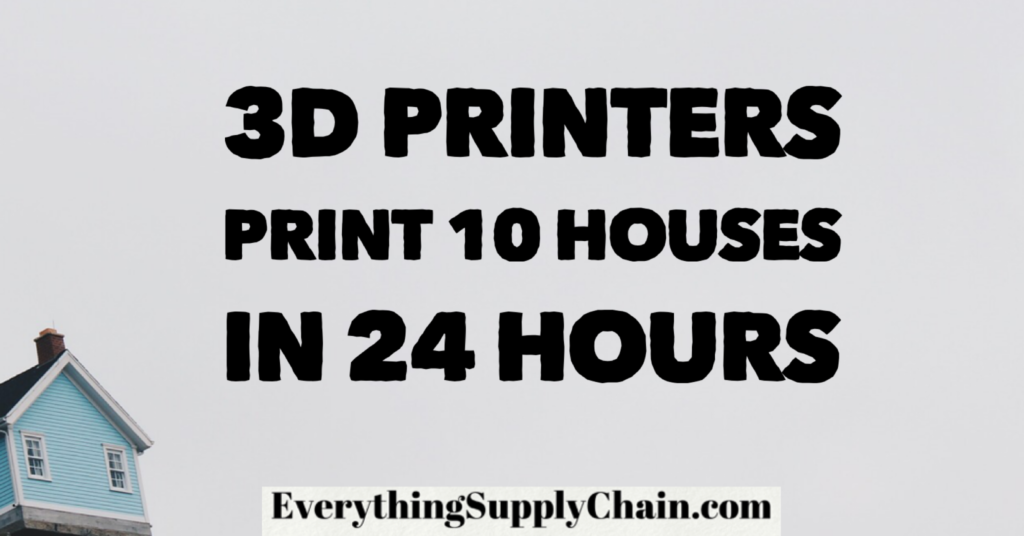3D printers print ten houses in 24 hours
3D printers print ten houses in 24 hours
3D printing has the potential to revolutionize the way houses are built by providing a faster, more efficient, and more sustainable method of construction. Some of the ways in which 3D printing could change the way houses are built include:
- Speed: 3D printing can produce components for houses much faster than traditional construction methods, which could significantly reduce the time it takes to build a house.
- Efficiency: 3D printing can produce components with high levels of precision and accuracy, which can reduce waste and improve the overall efficiency of the construction process.
- Sustainability: 3D printing can use a variety of materials, including recycled and sustainable materials, which can help to reduce the environmental impact of construction.
- Customization: 3D printing can enable the production of customized and unique components, allowing for more flexibility and creativity in house design.
Overall, 3D printing has the potential to significantly change the way houses are built by providing a faster, more efficient, and more sustainable method of construction. However, it is important to note that 3D printing is still in the early stages of development, and it will likely take some time before it becomes a mainstream method of construction.
3D printing technology has the potential to make building homes cheaper than traditional methods, but it is not yet a proven method for large scale, low-cost housing.
The cost of 3D printing a home will depend on a variety of factors such as the size of the home, the materials used, the location, and the cost of labor. However, using 3D printing technology can reduce the costs associated with traditional building methods, such as labor and material waste.
3D printing technology can also reduce the time required to build a home, which can help to reduce labor costs. In addition, 3D printing can also allow for more precise and efficient use of materials, which can help to reduce material waste and costs.
However, the technology is still in its early stages, and many of the 3D printed homes that have been built to date have been relatively small and experimental in nature. The cost of the technology and the materials that are used are still relatively high, and the scalability of the technology is yet to be proven.
It’s important to note that 3D printing is not a magic solution and it needs to be combined with other ways of construction and regulations. The industry should continue to monitor the technology and its developments, as it may become a viable option for low-cost housing in the future.
- “Even a small village in the middle of Africa with a 3D printer will have access to any good it can download. The world of the ‘Star Trek’ replicator is not far away.” ~Peter Diamandis
Videos on 3D Printing and other supply chain topics.
- 3D Printing: a Revolution or a Fad.
- Build a 3D Printer That You Can Take Anywhere!
- Elon Musk: How I Became The Real ‘Iron Man’.
- Emerging Technologies Improve Supply Chain: AI, AR, Blockchain, IoT, RPA, Robots…
- Future of the Digital Supply Chain
- How 3D Printing will Revolutionize MRO by Tim Simpson, PhD.
- How Construction Automation Can Keep Projects On Time And Under Budget.
- Here’s what the first 3D-printed home for sale looks like.
- Human Robot Production Process with New 3D Printer Factory.
- Logs to Lumber – An aerial journey through the sawmill.
- Why This 3D-Printed House Will Change The World.
- World’s first 3D printer housing community
- 3 Ways Elon Musk is Disrupting the Construction Industry







